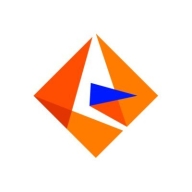

WhereScape RED and Informatica IDMC compete in the data integration and governance category. WhereScape RED holds an advantage in automation and cost-effectiveness, while Informatica IDMC leads in cloud compatibility and comprehensive data integration features.
Features: WhereScape RED is highly regarded for its automation in generating metadata-driven ETL processes and comprehensive documentation, ideal for agile development. Users also benefit from warehouse automation, impact analysis, and serverless ETL execution. Informatica IDMC is noted for its robust data integration and governance capabilities, supporting numerous data sources with strong cloud compatibility. Users appreciate its performance and connectivity.
Room for Improvement: WhereScape RED is challenged by performance and scalability with high data volumes, a lack of change data capture support, and the inability to share metadata repositories. It could also enhance task scheduling and error logging. Informatica IDMC could simplify its UI and reduce complexity, particularly for new users, and improve integration with certain platforms and large data handling. Users seek better pricing flexibility and on-prem to cloud functionality.
Ease of Deployment and Customer Service: Both products offer flexible deployment options, with WhereScape RED focusing on on-premises and Informatica extensively supporting cloud environments. WhereScape RED receives praise for personalized technical support, though post-purchase support experiences may diminish over time. Informatica IDMC receives positive feedback for strong customer support and comprehensive deployment assistance.
Pricing and ROI: WhereScape RED is seen as a cost-effective solution with straightforward licensing focused on developer seats, noted for significant ROI by reducing time-to-market and maintenance costs. Its flexible licensing supports easy scalability without CPU concerns. Informatica IDMC is perceived as expensive with complex pricing, yet offers robust functionality that justifies the cost for larger enterprises, even leading some users to explore alternatives.
We see return on investment from this solution in terms of time; time reduction or cost benefits is what we are getting very good results from.
Due to the tool's maturity limitations, solutions are not always simple and often require workarounds.
The response time is pretty good because we have someone in-house, who is an expert from Informatica, in our team who can help us with any sort of queries usually.
For products Master Data Management or related to MDM or Data Governance, there is no way by which we can directly practice, and my team struggles at that point.
As a SaaS platform, IDMC is quite scalable and provides complete flexibility.
I find Informatica Intelligent Data Management Cloud (IDMC) to be a sustainable and scalable solution.
Stability is crucial because IDMC holds business-critical data, and it needs to be available all the time for business users.
The tool needs to mature in terms of category-specific attributes or dynamic attributes.
The observability concept in Informatica Intelligent Data Management Cloud (IDMC) needs improvement as the capabilities are not up to the mark compared to the industry.
The licenses are too expensive compared to before, which is why customers are now preferring other data metadata management tools like OneTrust, Collibra, and Azure Purview.
IDMC is often described as the 'Ferrari of Master Data Solutions,' implying that while expensive, it is business-critical and, therefore, justified.
The licenses are too expensive compared to before, which is why customers are now preferring other data metadata management tools like OneTrust, Collibra, and Azure Purview.
I think the costs are reasonable for the kinds of features that Informatica Intelligent Data Management Cloud (IDMC) has.
In on-premise, we call it EDC for metadata management, while in cloud-based technologies, it is known as the Metadata Command Center, which serves the same purpose as EDC concerning CDGC.
The platform's ability to pull in data from other platforms without the need for an additional integration tool enhances its appeal.
Informatica Intelligent Data Management Cloud (IDMC) can connect to pretty much any application, including Oracle Analytics and Power BI, and it works quite seamlessly.
| Product | Market Share (%) |
|---|---|
| Informatica Intelligent Data Management Cloud (IDMC) | 3.4% |
| WhereScape RED | 1.0% |
| Other | 95.6% |

| Company Size | Count |
|---|---|
| Small Business | 42 |
| Midsize Enterprise | 24 |
| Large Enterprise | 134 |
| Company Size | Count |
|---|---|
| Small Business | 6 |
| Midsize Enterprise | 4 |
| Large Enterprise | 11 |
Informatica Intelligent Data Management Cloud (IDMC) integrates data quality, governance, and integration with flexible architecture. It supports multiple domains and a data models repository, delivering AI-enhanced data management across cloud-native platforms.
IDMC provides seamless integration and governance capabilities that support diverse data environments. Its comprehensive suite includes customizable workflows, data profiling, and metadata management. AI features, a data marketplace, and performance scalability enhance data management. While its interface poses challenges, its robust matching and cloud-native integration facilities are essential for complex data ecosystems. Users employ IDMC for connecting systems, ensuring data quality, and supporting data compliance but seek better pre-built rules, services, and improved connectivity, especially with platforms like Salesforce. Licensing, cost, and added AI functionalities are areas for potential refinement.
What are the key features of IDMC?IDMC is implemented across industries for data integration, metadata management, and governance. Organizations use it to connect systems, migrate data to cloud environments, and maintain data quality. They manage master data and automate business processes, facilitating data lineage and ensuring compliance with privacy regulations.
WhereScape is data warehouse software that automates the Data Warehouse lifecycle. From implementation to maintenance, WhereScape will ensure your data warehouse projects are completed up to 5x faster than manual coding.
We monitor all Data Integration reviews to prevent fraudulent reviews and keep review quality high. We do not post reviews by company employees or direct competitors. We validate each review for authenticity via cross-reference with LinkedIn, and personal follow-up with the reviewer when necessary.